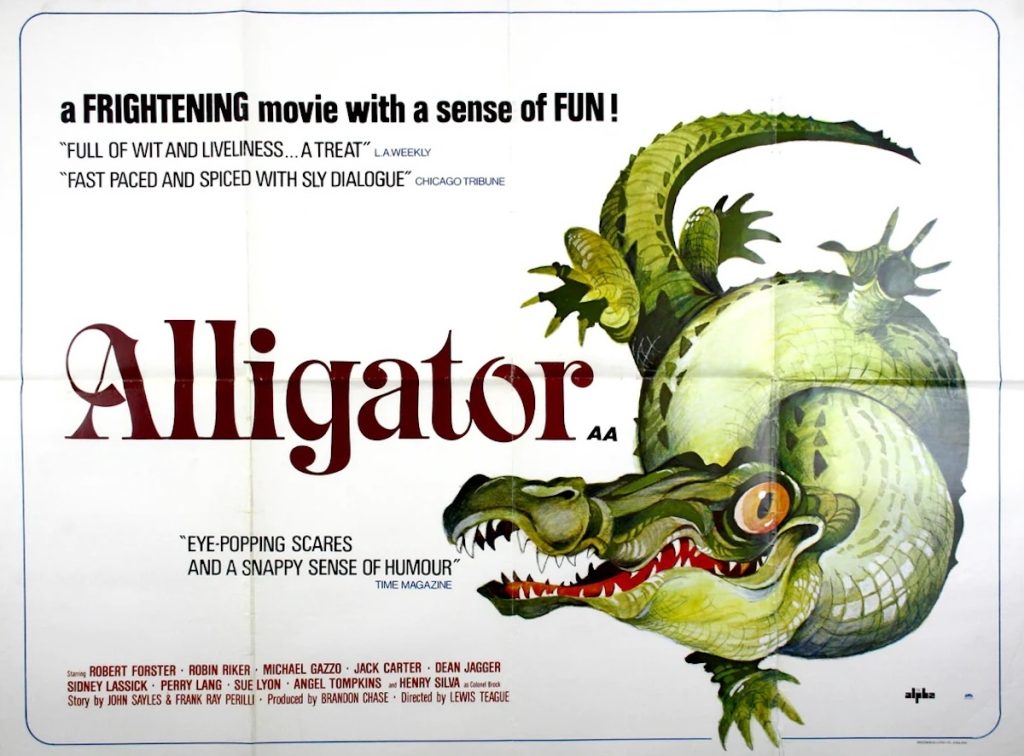As popular as Godzilla was – so much so, Toho rushed a sequel into production and had it in theaters six months later – other Japanese studios were slow to jump on the kaiju bandwagon. Apart from Daiei’s Warning from Space, released in 1956, the Big G wouldn’t have a serious rival until the mid-’60s, when Daiei hatched its own giant, fire-breathing reptile. Its name was Gamera, and it headlined seven films between 1965 and 1971. Many of them were aimed squarely at children, but that wasn’t the case at the outset.
Much like Godzilla was roused from its slumber by atomic testing in the Pacific, Gamera, the Giant Monster opens with a bomber carrying a nuclear payload getting shot down over the Arctic and exploding on impact. Forgoing the mystery built into the early passages of Godzilla, director Noriaki Yuasa (an assistant director on Warning from Space) shows the title character digging itself out of the ice five minutes in. Its emergence coincides with the visit of Japanese zoologist Dr. Hidaka (top-billed Eiji Funakoshi, star of Kon Ichikawa’s Fires on the Plain) to an Eskimo encampment to ask their chief about local legends of “strange turtles.” The chief is tight-lipped at first, but eventually reveals the turtle is none other than “the Devil’s Envoy… Gamera!”
That’s all the explanation screenwriter Nisan Takahashi gives for Gamera’s existence. The rest is conjecture as Japan’s scientists (Dr. Hidaka chief among them) and civil and military authorities try to understand the monster’s behavior and work out how to keep it in check. Turns out Gamera is impervious to conventional weapons, and dropping another A-bomb on it would likely do more harm than good. Meanwhile, it gains a young fan in the turtle-obsessed Toshio, a boy who comes face to face with it and lives to tell anyone within earshot that “Gamera doesn’t want to be bad.” He should try that line on the families of the civilians Gamera incinerates when it trashes Tokyo. “Please, Gamera, don’t do anything bad,” Toshio pleads, but his words fall on deaf ears.
In spite of Toshio’s antics (a harbinger of the kid-centric sequels to come), Gamera, the Giant Monster is a serious-minded affair, and its black-and-white cinematography lends it a moodiness most of the later films, all made in color, would abandon. The main exception is 1966’s Gamera vs. Barugon, which deals with themes of greed and corruption, and has an ambitious plot to match its extended running time and higher production values. True, it’s still about a giant turtle fighting a giant horned lizard, but Takahashi’s ability to fold in a sobering lesson about man’s shortsightedness makes Gamera vs. Barugon a worthy entry in the kaiju canon.

The same year Gamera faced its first outsized foe, it received the Godzilla, King of the Monsters revamp treatment as Gamera, the Giant Monster was fashioned into Gammera the Invincible for U.S. consumption. While a fair bit of Yuasa’s original footage is used (albeit dubbed or narrated over), it is supplemented by all-new scenes with American actors. Albert Dekker is top-billed as the Secretary of Defense, with Brian Donlevy and Dick O’Neill as the generals reporting to him about the efforts to contain the threat. No attempt is made to have any of them interact with their Japanese counterparts, though, and the scenes at the United Nations devolve into bickering between the U.S. and Russian representatives. (While the original makes a point of not identifying the nationality of the shot-down jet, Gammera the Invincible makes plain this is all the Soviets’ fault.)
As the series chugged along under Yuasa’s direction (the only entry he didn’t helm was Gamera vs. Barugon, which might explain its more adult nature), the giant turtle battled odd-looking creatures both domestic and alien. It also proved to be an unwavering “friend to all children” and a staunch defender of the planet. 1967’s Gamera vs. Gyaos even includes the ultimate in wish fulfillment, when Gamera saves a boy from certain doom and gives him a ride on its back. Heroism comes at a cost, though, because Yuasa lays the green blood on thick whenever Gamera is injured, something that occurs frequently during its tussles.
Most of those match-ups were dubbed and sent straight to TV in the U.S., bearing generic titles like War of the Monsters and Attack of the Monsters. Daiei also repurposed the various monster fights for 1980’s Gamera: Super Monster, which closed the Showa era out with a glorified clip show. Their most lasting afterlife, however, came when a certain gentleman named Sandy Frank repackaged and redubbed them later that decade. Those were the versions licensed by Mystery Science Theater 3000, which introduced the giant turtle and its menagerie of rubber-suited adversaries to a whole new generation.
“Gamera, the Giant Monster” is streaming on a variety of services in a variety of versions.



